#ethnicity: slovak
Text
carrie coon gif pack

CLICK THE SOURCE LINK BELOW and you will find #178 245x150px gifs of Carrie Coon as Nora Durst in The Leftovers Season 3 (first half)! These were created from scratch by Sveja. Do what you want with these, just don’t repost/claim as your own, don’t use them to play Carrie, and like/reblog if using.
Carrie was 36 during filming and is white (German, Slovakian, Hungarian, French, English).
Please note that The Leftovers is a supernatural tv show along the lines of a post-apocalyptic timeline.
tw: alcohol, babies, body image, children, drinking, eating, flashing lights, food, hospital, hugging, injury (cast from a broken arm), nsfw, pda, police, shaky camera, smoking, water, waves
#fc: carrie coon#gender: cis woman#age: 1981#age group: 30s#ethnicity: white#ethnicity: german#ethnicity: slovak#ethnicity: hungarian#ethnicity: french#ethnicity: english#type: gif pack#made by sveja
14 notes
·
View notes
Text

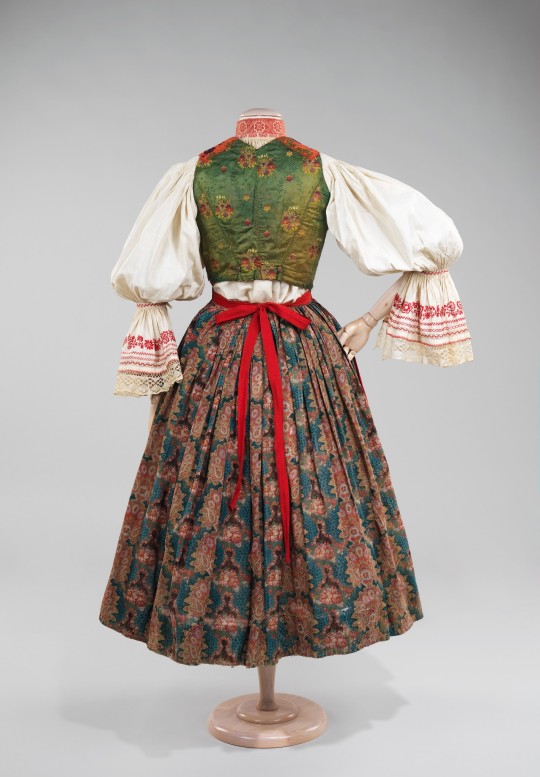
• Ensemble.
Date: 1840–1880
Culture: Slovak
Medium: wool, cotton, silk
#fashion history#history of fashion#dress#fashion#19th century fashion#19th century#19th century dress#ethnic#ethnic fashion#traditional dress#traditional#traditional clothing#ensemble#Slovak#1840#1880
3K notes
·
View notes
Text

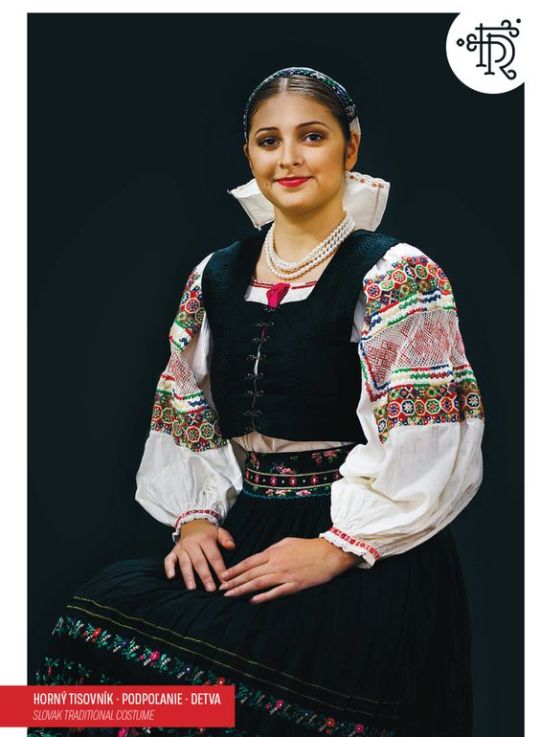
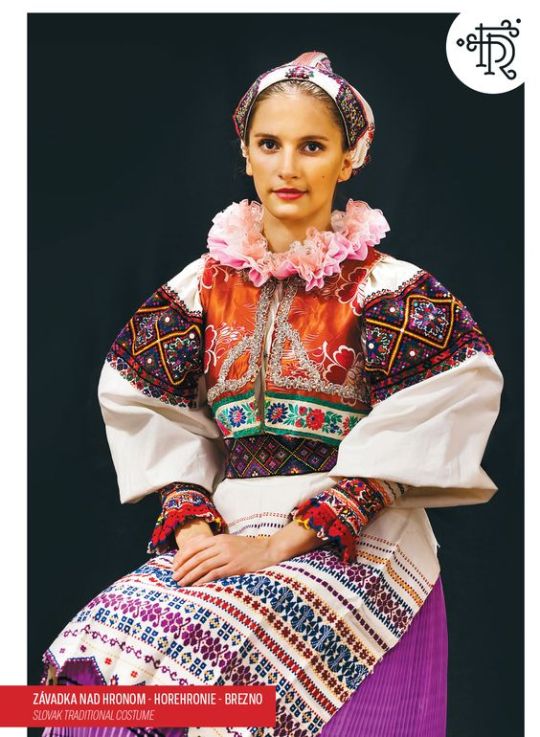
Slovak Folk Costumes
#slovak#slovakia#folk costumes#traditional clothing#ethnic#slovaks#carpathian#eastern europe#central eastern europe
61 notes
·
View notes
Text
old world still alive in mckeesport pa every time i go downtown somebody’s asking me what nationality i am
#thinking abt it like ethnicity is new world newspeak to the ppl of the mon valley#in reality were like 5 gens from the mass mvmt of people to this area#but in the minds of the people we 1 gen in#shoutout to the people who will look at me and just say. youre german.#and the people who are always surprised to find out im slovak bc i dont look basic#mm.txt#mckeesport#mck#home
0 notes
Photo

Language families of Austria-Hungary in 1910.
by hunmapper
Multinational Empire: Austria-Hungary was characterized by its diverse ethnic composition, encompassing a wide array of ethnic groups and languages. The empire included Germans, Hungarians, Czechs, Slovaks, Poles, Ruthenians, Romanians, Croats, Serbs, Slovenes, Italians, and others. Dual Monarchy: The Austro-Hungarian Empire was officially known as the Dual Monarchy because it consisted of two separate entities, the Austrian Empire and the Kingdom of Hungary, each with its own government and institutions. The two entities shared a monarch (Emperor Franz Joseph I from 1867 to 1916), who ruled both parts of the empire. Germans and Hungarians: The Germans and Hungarians were the two largest ethnic groups in Austria-Hungary. The Germans were predominant in the Austrian part of the empire, while the Hungarians were the majority in the Kingdom of Hungary. The dual structure reflected the compromise reached in 1867 to balance the power between these two major groups. Slavic Diversity: The Slavic population was significant and diverse within Austria-Hungary. This group included Czechs, Slovaks, Poles, Ruthenians (Ukrainians), Serbs, Croats, and Slovenes. The empire struggled to manage the national aspirations and demands for autonomy from these various Slavic groups. Nationalism Challenges: Nationalism was a major challenge for Austria-Hungary, as various ethnic groups sought greater autonomy and independence. The rise of nationalism contributed to tensions and conflicts within the empire, ultimately playing a role in its dissolution after World War I. Balkan Component: The empire extended into the Balkan region, incorporating territories with a mix of South Slavic, Romanian, and other ethnic groups. The Balkan component added another layer of complexity to the ethnic mosaic and contributed to the geopolitical challenges faced by the empire.
115 notes
·
View notes
Text
Thanks to my post about the 28th, it’s come to my attention that a significant portion of humanity don’t read history books for fun, so here’s a few broad strokes of what, exactly, is going on with the cultural connotations of race within Dracula, as understood by an American:
European racism of the day was predominantly based on cultural ethnicity rather than skin color, and one of the main sliding scales (other than how old and prestigious the ancestry was) was how far west you were on the Eurasian continent. The further east you went, the less “civilized” things became, until you hit Asia and Oceania and just became inundated with absolutely rancid racist caricatures. Stuff from the “Orient” was there for exotic/shiny toys and moral lessons about how much better the West was, and not much else, so you can imagine what depictions of actual Asian people thus became.
(We’re faced with this east vs. west scale in Jonathan’s very first entry: Budapest straddles the line between the “civilized” western part of Europe and the “uncivilized,” opulent, and exotic world of eastern Europe. Jon is going from the known and familiar city into the mysterious, unfamiliar wilderness, an extremely common Gothic horror archetype.)
Both the fear of the unknown and the exoticizing/othering of Eastern Europe play heavily into Dracula’s themes, with the sexually predatory Count Dracula coming to England to do all sorts of unspeakable sordid things to innocent English women. (Not exactly Stoker’s finest hour, but this was a typical attitude of the day.)
Following that, it was also thought at the time that one’s moral character was essentially genetic. Certain people of certain races were predisposed to be “better” or “worse,” and your own moral character was also influenced by your parents’ status in society and behavior. A prostitute mother or a criminal father meant you would inherit their dubious moral quality, which is partially where “this person has bad blood” comes from. Bad blood is literally the negative morality passed onto you from your parents: you’ve inherited the bad qualities carried in their blood.
Linking back to the east-west thing, the further east you go -you’ve guessed it- the worse this supposed ancestral bad blood gets. People of “lesser” races included the Romani, Jews, Slovaks (and sometimes the Russians), and they were just supposed to be, like, naturally inclined to be bad. They were Programmed For Crime from the moment they were born, so you didn’t need to explain why such a character was evil when they showed up in your novel: I mean, they’re [INSERT RACE], aren’t they? It’s in the blood. No explanation needed. Everybody knows that.
The assumption of the time was that such people were literally born bad, which of course naturally justified how they were treated. When they showed up on a page, you were supposed to distrust them on sight.
Occasionally, low-class people were also treated as a race all their own, like poverty was some kind of moral failing. After all, the older, more prestigious, and wealthier your family was, the better their inherent moral quality, so poor people are obviously uncouth and have bad blood, right?
(It’s an extremely stupid circular way of thinking, but that’s bigotry for ya.)
Dracula is a nobleman with old lineage, but he’s also steeped in the flavor of Eastern Europe: “barbaric” and proud, yet initially treating Jonathan with extreme courtesy; threateningly exotic and yet also familiar with English customs. As we go through the book, you’ll see that he almost exclusively hires Romani, Jewish, or extremely poor for his henchmen: he’s a force of evil that uses other “evil” tools, who bend easier to his will than “normal” people of “proper” races.
(By all means, please pause here a moment to scrub yourself of the nauseating feeling that such a bullshit attitude evokes.)
In any case, Dracula himself is a pretty good example of all these racial ideas converging, which was also why he made such an effective monster to the Victorians: there’s just enough that’s familiar and proper in him that they couldn’t quite properly Other him, which links back to the transformative horror of vampirism turning something formerly good into something very very bad, which with their worldview of “you are born with this moral code because of racial predisposition and lineage” is just shocking. You mean this Eastern European man can infect our formerly good and pure citizens and make them act his way, just by an act of force? Uh-oh.
Anyways TLDR Dracula is a book steeped in the cultural traditions and expectations of the day which means that it’s lovely horror but also an absolute crock of shit at times due to racism (and several other -isms, which I will not cover here because I am trying not to make this an essay).
279 notes
·
View notes
Note
do u have any thoughts (it’s time to get some.) about where diff utmv chars could be from?
like, yk that Core is Slovak? Why wouldn’t other residents of the multiverse be from diff countries and of diff ethnicities?
I definitely subscribe to the fandom logic of the characters taking after their respective creators :) especially in the language department!! For example, Dusttale and Farmtale (proper) having a Korean creator and speaking Korean, Cross and the Dreamtale Twins speaking Spanish, Killer and Arabic, etc :))
#Ask#anon asks#utmv#core frisk#dust sans#dream sans#nightmare sans#cross sans#killer sans#ig#its a bit different from core but I find it fun to apply these concepts#Undertale multiverse#Headcanons#my beloved
98 notes
·
View notes
Text
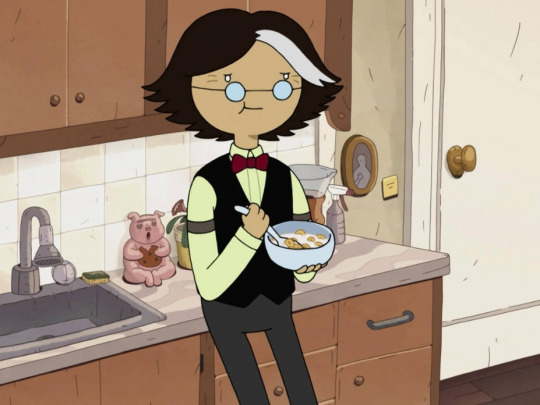
Given his last name, by ethnicity this guy is either Slovak or Czech:
🇸🇰 Šimon Petríkov
🇨🇿 Šimon Petříkov
125 notes
·
View notes
Text

Edita Angyalová
Gender: Female
Sexuality: Lesbian
DOB: 8 August 1979
Ethnicity: White - Slovakian
Occupation: Politician (Direction - Social Democracy)
Note: In 2012 she became the first female Slovak politician to come out as homosexual
#Edita Angyalová#Edita Angyalova#lgbt#lesbianism#gay politicians#female#lesbian#1979#white slovakian#politician#first
32 notes
·
View notes
Text
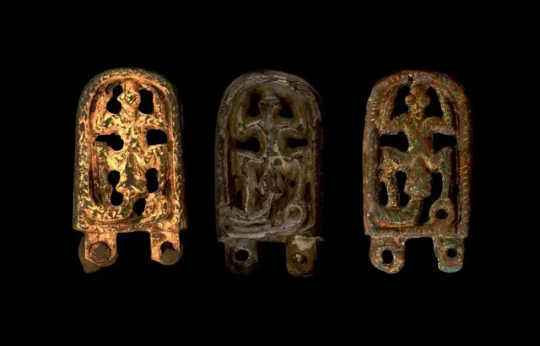
Archaeologists Uncover a Bronze Belt Fitting From an Unknown Pagan Cult
team of archaeologists from Masaryk University have uncovered a bronze belt fitting from an unknown pagan cult in the village of Lány, located in the Central Bohemian Region of the Czech Republic.
The belt fitting dates from the 8th century AD and depicts a snake devouring a frog-like creature that appears in Germanic, Avar, and Slavic mythology.
Such representations are related to the cosmogonic myth of the world’s creation which are found at various sites across Central Europe, while the interaction between the frog and the snake can be linked to fertility cult practices.
According to the researchers, the belt fitting provides evidence of a previously unknown pagan cult that connected diverse populations of varying origins during the early Middle Ages before the advent of Christianity which began in the 9th century AD.
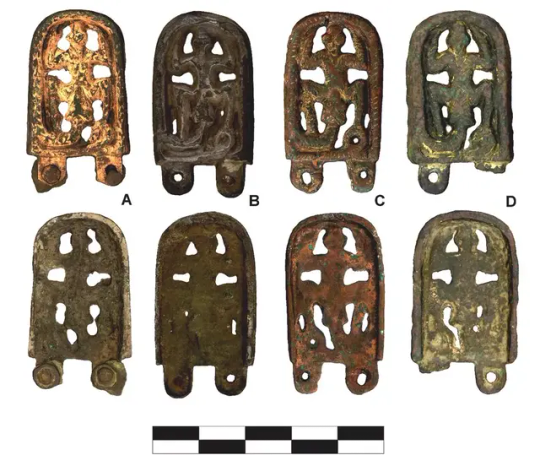
The discovery in Lány belongs to the group of so-called Avar belt fittings, which were mainly produced in Central Europe in the 7th and 8th centuries AD. It was likely worn by an Avar, a Northeast Caucasian ethnic group who settled in the Carpathian Basin, however, it could also be from one of the cultures influenced by Avar cultural practices.
Using an X-ray fluorescence analysis (EDXRF), scanning electron microscopy (SEM), a lead isotope analysis, and 3D digital morphometry, an analysis of the belt fitting revealed that the greater part of the bronze was heavily gilded and was cast by using a wax model.
A chemical analysis of the lead isotopes in the bronze alloy indicates that the copper used in the production was mined in the Slovak Red Mountains, while the morphometric analysis suggests that some of the fittings originate from the same workshop.
The results of the study have been published in the Journal of Archaeological Science.
By Mark Milligan.
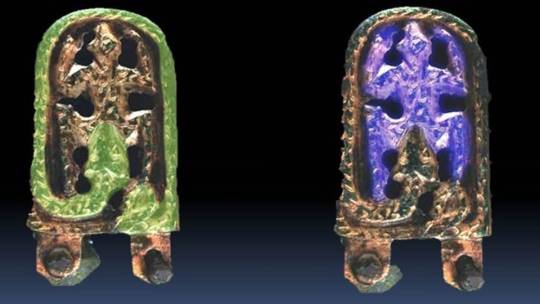
#Archaeologists Uncover a Bronze Belt Fitting From an Unknown Pagan Cult#Czech Republic#village of Lány#bronze#Avar belt fittings#ancient artifacts#archeology#archeolgst#history#history news#ancient history#ancient culture#ancient civilizations#avar culture
41 notes
·
View notes
Text
Unfortunately this update really showcases why Stoker's ethnographic understanding of the Austro-Hungarian empire is so problematic.
Victorian ethnography was focused on assigning personality traits to groups of people based on their ethnicity. It is clear that Stoker used these sorts of descriptions to choose the people he has helping the Count (Jonathan makes these kinds of judgements of the Romani as "lawless" and Slovaks as "barbarous" in his narration.) Referring to them as ethnic groups in his story is meant to tell us something about their motives.
It creates this very uncomfortable dynamic of the good locals who tried to warn Jonathan - Romanians and Magyars, and the untrustworthy locals - Romani and Slovaks. Needless to say arranging ethnic groups in these black and white terms is deeply racist and shows how little he understands the multiethnic empire he is describing.
670 notes
·
View notes
Note
Speaking as a Jewish leftist, I've always noticed antisemitic leftists constantly shift the goalposts when it comes to our ethnic background. I'll see them constantly calling Ashkenazim white but when I see people providing pictures of Ashkenazim who don't look white at all these same people will scream about how you're cherry picking. Like huh?? You claim all Ashkenazim are white... Then cry cherry picking when you're shown Ashkenazim that don't fit whatever imagine of Ashkenazim you've conjured up in your head??
I'm not even Ashkenazim (I'm Sephardic) but it's something I've seen A LOT; especially on Twitter. It's so g-ddamn annoying. It definitely leaves me feeling alienated; even more so because I'm also Indigenous.
I assume you mean pictures like these? My grandfather was born on an actual shtetl in Poland, and he was a spitting-image lookalike for Hafez Assad.
American leftists really struggle with the concept of ethnicity, with there being any groupings beyond their own idiosyncratic color-binarist categories. The same people who constantly lecture about how we need to learn so much from European politics seem not to grasp that Europe is structured to recognize Germans and Russians and whatnot as distinct ethnicities, not to know or care why Czechs and Slovaks got a two-state solution.
What is especially infuriating is when these leftists screamed bloody murder when Jews gained inclusion under the Civil Rights Act of 1964 as an ethnic group of ultimately Mediterranean origin. From their startpoint that Jews aren't "real," that we are strictly a religion to believe or not-believe, not a people or a nation to belong to, they saw Trump manufacturing a nonexistent ethnic component for Jews to make it easier to exterminate us (through the well-known "actually, kill these people" subclause of the Civil Rights act of 1964). I had a recent very unpleasant conversation with a Jewish leftist friend who had never heard of Tay-Sachs and who repeatedly insisted that I must have misunderstood a report about some other group.
These same leftists will of course recognize Arabs as "real," even though under U.S. law Arabs have been categorized as white for over a century.
111 notes
·
View notes
Text
Dumb question, is Czechoslovakian an ethnicity? I found out that’s what my biological grandfather was, but that country didn’t exist until 1918, after gaining independence from Austria-Hungary. So was he a Czech, Slovak, Austrian or Hungarian? Or all the above?
15 notes
·
View notes
Photo
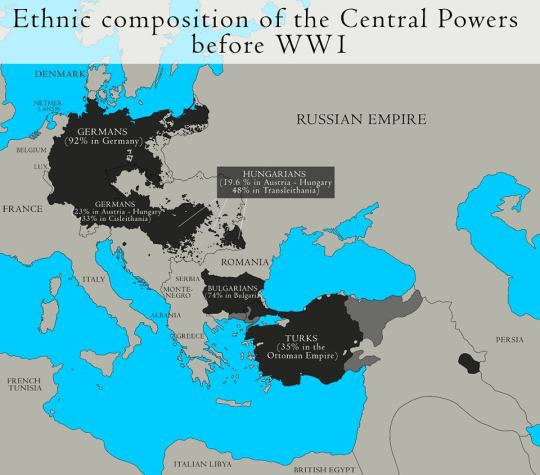
The Central Powers during World War I were composed of Germany, Austria-Hungary, the Ottoman Empire, and Bulgaria.
As the dominant power among the Central Powers, Germany had a highly industrialized economy and a strong military. It sought to expand its influence in Europe and globally. Germany had a homogeneous population, mainly Germans (92%), but also Poles and others minorities.
Austria-Hungary was a multi-ethnic empire, comprising numerous ethnic groups such as Austrians (23%), Hungarians (19.6%), Czechs, Slovaks, Poles, Ukrainians, Croats, Italians and others. The empire faced internal tensions due to nationalist aspirations of different ethnic groups seeking greater autonomy or independence.
The Ottoman Empire was a vast, multi-ethnic state that encompassed diverse regions in the Balkans and Middle East. Its population included Turks, Arabs, Kurds, Greeks, Armenians, and others. The empire was experiencing internal decline and faced challenges from nationalist movements within its territories.
Bulgaria, though smaller in size compared to the other Central Powers, played a significant role in the Balkans. Its population was predominantly Bulgarian, but it also had sizable minorities such as Turks and Greeks.
Overall, the ethnographic situation within the Central Powers was complex, with various ethnic groups coexisting within their respective empires. Nationalist sentiments and aspirations for self-determination among different ethnicities contributed to internal tensions and challenges for these powers during World War I.
by danmaps_org
78 notes
·
View notes
Text
European liberals erupted into cheers in 2019 when the 45-year-old environmentalist and civil rights lawyer Zuzana Caputova was sworn in as Slovakia’s president. Even though she has fallen short of her ambitious goal of rooting out the persistent corruption and cronyism that course through Slovak society, she has chalked up many successes. These have earned her widespread popularity among Slovaks, who seemed to understand her project would always require more than one five-year term.
There’s just one problem: Caputova, facing new headwinds from the election of a new populist prime minister, has announced she’s not prepared to fight on.
Not only was Caputova the first-ever woman to hold the office, but her progressive, pro-European outlook and squeaky-clean biography stood out in a regional landscape stocked with ethnic nationalists, authoritarians, and other questionable operators. Caputova’s tough anticorruption platform was welcome relief to a country that had been rocked by graft, money laundering, and abuse of power scandals, as well as the contracted murder of a young journalist investigating organized crime.
In the course of her five-year term, the newcomer to elected office acquitted herself remarkably well, navigating Slovakia through the pandemic and then the war in Ukraine, a country with which it shares 60 miles of border to the east. Even as Slovakia’s southern neighbor, Hungary, prevaricated and obstructed transatlantic solidarity with Ukraine—a course many Slovak nationalists applauded—Caputova, suddenly head of a front-line state, stood fast. She has remained unflinchingly pro-Western even in the face of an acute energy crisis and hundreds of thousands of refugees.
Her mission to clean up the Slovakian state also notched impressive wins. Dozens of investigations were launched and cases opened up against figures linked to former governments—many of which led to convictions. In August 2023, Caputova—sometimes referred to as the Erin Brockovich of Slovakia—fired the country’s counterintelligence service chief for interfering in corruption investigations. But her anticorruption drive grew larger in scope when parliamentary elections in September 2023 reinstated Robert Fico, the former prime minister and pro-Russian, anti-American populist with the interests of himself and his associates always foremost in mind.
Many supporters expected that Caputova, as the principled, popular face of a new Slovakia, would soldier on for at least another term come elections in March 2024: to finish the job she had started. But Caputova’s tenure, she announced in June 2023, will come abruptly to an end. Her family’s well-being, she said, was behind her choice not to run again. “My decision is a personal one,” she said. “I am sorry if I disappoint those who expected my candidacy again.” In office, she had received multiple death threats, she said. A year earlier, she had already complained about “people who are threatening to kill me are using the vocabulary of some politicians. It does not only concern me, but also my loved ones.”
At the time of her announcement, Caputova polled as Slovakia’s most trusted politician. “I was surprised and disappointed when I heard the news,” said Pavol Demes of a German Marshall Fund fellow in Bratislava, who served as Slovakia’s foreign minister from 1991 to 1992. “Her track record proves that it was not coincidence that people elected her,” Demes said, adding that he believes Caputova would have prevailed again at the ballot box.
Others admit they’re more than just disappointed with Caputova’s “premature departure,” as the Slovak daily Dennik N put it. “Having an opportunity and not using it is literally a sin,” opined the Slovak newspaper Pravda, “especially if it is one that will never come again. … President Zuzana Caputova’s decision not to run can be considered a mistake. At a time when the chaos in Slovak politics has reached unprecedented proportions and the disillusionment among the population is great, the president bears even more responsibility for the fate of the country.”
In office, Caputova often punched back as hard as she was punched by her less principled opponents. She refused to let Fico, in the opposition since 2020, hound and bully her with impunity. In May 2023, she sued Fico for calling her an “American agent” and of “appointing Soros’ government,” referring to U.S. billionaire-philanthropist George Soros and the technocratic caretaker government she appointed in May 2023. Slovak authorities are still pursuing criminal cases involving dangerous threats made against the president.
Caputova’s aversion to the nastier aspects of Central European politics—in 1995 the son of the then-Slovak president was literally kidnapped—is understandable. But Caputova’s presence is all the more necessary today as Fico and his Smer-SD party are back in power and bent on returning Slovakia to its former incarnation. In just four months, Caputova has checked Fico several times. In October, for example, Caputova quashed the nomination of Rudolf Huliak as environment minister by the Slovak National Party, a Fico ally. Huliak, a nationalist, is known as a climate skeptic and opponent of LGBTQ+ rights.
She is currently weighing a veto of the Fico government’s move to dismantle the special prosecutor’s office—the body that handled the most serious corruption cases—and modify the criminal code, which triggered weeks of protests across Slovakia and rule-of-law concern from the EU. By weakening criminal sanctions for financial crimes, Fico could rescue the likes of Smer-allied oligarchs who would otherwise face prison sentences. One opposition politico charged that the law looks as if the mafia itself had written it. If her veto is overridden, which is likely, Caputova could take the issue to the Constitutional Court.
Caputova’s decision not to run thus opens the way for a multi-candidate race, the first round of which will be held on March 23 with, if necessary, a second in April. The vote is likely to come down to two candidates: National Council Speaker Peter Pellegrini, an on-again, off-again Fico ally; and Ivan Korcok, a liberal-minded former Slovak foreign minister and career diplomat. If Pellegrini triumphs, his victory will open the way for Fico to set in motion a pro-Russia political course that will greatly complicate the West’s defense of Ukraine, among other concerns.
Certainly, there would be no presidential corrective to hinder Fico in emulating his strongman counterpart next door in Hungary, Viktor Orban. Poland’s throwing off of its authoritarian leadership last year could have left Orban completely isolated in Central Europe. But Fico, though unlikely to amass the power of Orban’s Fidesz party or act so defiantly as Law and Justice Poland, sees Orban as a blood brother.
“Fico and his followers are fascinated by Orban’s method of governance since 2018,” Juraj Marusiak of the Slovak Academy of Sciences’ Institute of Political Science told Foreign Policy. “They see this authoritarianism as efficient and Orban as someone who takes care of his country’s national interests. This has made Orban creditable in Central Europe beyond Hungary alone.”
And Caputova’s bright light will be missed beyond diminutive Slovakia. Upon her election in 2019, a Hungarian acquaintance said to me that the only reason someone like Caputova could win in Central Europe is because she seemed to have no drawbacks at all: She was politically clean, charismatic, down to earth, and smart. And in office, she learned the ropes quickly. But she wasn’t perfect, apparently—no one could foresee that there would eventually be limits to her will to lock horns with Slovakia’s ruthless profiteers.
Sadly, there’s only one of her in the region. And soon, by her own choice, there will be none.
15 notes
·
View notes
Text









Angelina Michelle Avatars [3]
Angelina Michelle is an italian social media personality and model. She is 35 years old and was primarily known for her lifestyle videos on instagram : @angelin_a_michelle in 2017. In a May 12, 2021 Instagram video she featured the song "Music To Watch Boys To" by Lana Del Rey. She is from slovak and italian descent.
- Do not steal
- Do not use without credits
- Like or reblog if you use
I do not support the use of any of my avatars with disrespect over their ethnicity. Please considerate the ethnicity of the faceclaim you chose before making any mistake.
11 notes
·
View notes